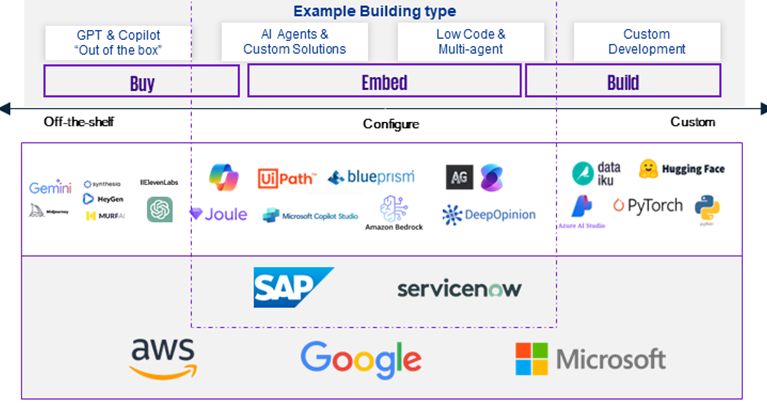The question of which AI tools are best suited for specific purposes is a common issue within organizations. The market is flooded with the latest, most advanced AI tools, whose relevance can quickly change. It is therefore essential to determine which tools truly add value, for example, through better customer relationships, more efficient processes, or smarter decision-making. Below is a structured approach to achieve this.
Step 1: Define Objectives
Many organizations start with the technology, but the correct order is to begin with the question: what does the organization want to achieve? It is important to first clarify the objectives and the existing foundation. This forms the basis for a solid business case, which helps in determining the areas of investment.
Step 2: Choose the Right Tool
Once the objectives are clear, the next step is to look at the appropriate tools. This is often the most challenging part of the process due to the many available options. It is useful to understand the different types of AI systems.
Currently, there are two popular terms in the context of AI systems: AI Agents and Agentic AI. AI Agents focus on performing tasks based on predefined instructions. Agentic AI, also known as multi-agent workflows, performs multiple tasks within a complete process and combines them, which is a more advanced approach. For these types of AI, there are three variants of tools: AI you buy, embedded AI, and AI you build.

- AI you buy: These are ready-made solutions that are immediately available and easy to implement. They require little technical knowledge and are ideal for organizations that want to achieve quick results or are just starting with AI.
- Embedded AI: This involves integrating AI into existing systems such as CRMs or ERPs, adding intelligent functions to tools already in use. This type of AI is user-friendly and makes processes more efficient without significant impact on employees.
- AI you build: These are custom AI solutions, tailored to the specific needs and challenges of the organization. Although these solutions are more expensive and complex to build, they offer the ability to do exactly what the organization needs. This type is suitable for organizations with unique processes or data challenges for which standard solutions do not suffice.
- When making a choice, careful consideration must be given to the organization's needs: speed versus customization, simplicity versus complexity. Additionally, it is important to consider the scalability of the solution: can it grow with the organization?
Are you clear about the objectives you want to use the tooling for and the type of tooling you are looking for? Then you can take a more focused look at which specific tool goes with it. In the overview below you will find a number of specific AI tools that contribute to specific organizational goals.

Step 3: Implementation
After choosing the tools, it is time to create an implementation plan. This includes creating a clear roadmap that outlines who performs which tasks and when. It is essential to allocate sufficient time and resources for training so that employees feel comfortable with the new technology.
Step 4: Optimization
The success of the implemented tools depends on continuous monitoring and optimization. It is important to check whether the tools perform as expected and to make adjustments if necessary.
Step 5: Foster an Innovation Culture
Technology only works if people are willing to use it. It is therefore crucial to create a culture of innovation within the organization. This includes encouraging an open attitude towards new technologies and providing support for their use. If you want to learn more about how to build a good AI culture, watch our explainer video on this topic.
From Goal to Tool
Choosing the right AI tools goes beyond just acquiring technology; it requires vision, planning, and collaboration within the organization. By first clarifying the objectives, then critically examining the appropriate tools, and finally carefully implementing and optimizing them, AI can create real value.



